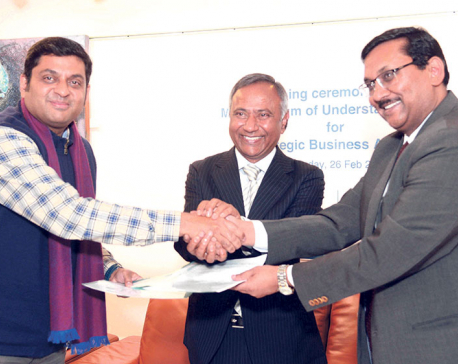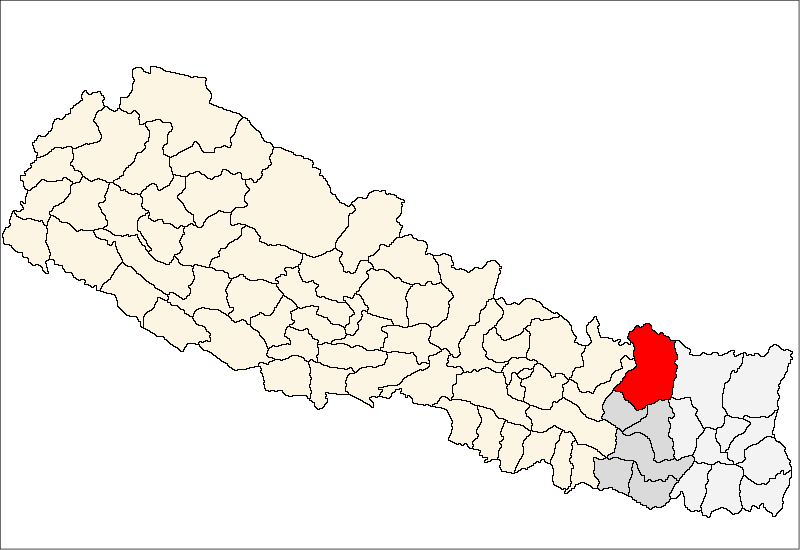
OR

Development of power projects should be looked from a larger perspective of increasing export of goods and services, not through myopic lens
The huge untapped hydro-resources in the country has been a much talked, but inadequately attended issue among high rung officials, party leaders, academicians and common people while tapping the resources for the larger benefit of the region is also taken up at the bilateral and regional forums. However, the irony lies in growing import of fossil fuel in Nepal that spurt to four percent of GDP during 2016-17. Similarly, the import bill of electricity amounted to more than NRs 18 billion during the last year that bridged the demand-supply gap of energy. This import figure reflects on trade balance of the country.
Energy, like the transport, is equally important sector to enhance production and productivity. Agricultural operations like irrigation, harvesting, safekeeping after harvesting and running of agro-processing industries are all supported by the use and availability of power. Similarly, efficiency and output of the manufacturing and service sectors also depends on the availability of regular and reliable power supply at an affordable price.
Major source of energy in Nepal are firewood and bio-mass which accounts for 78 percent of all energy consumption and is mostly used for cooking and heating. Petroleum comes second in the rank with a share of 12 percent while the use of grid connected electricity is just three percent in overall composition. Sources of renewable energy like micro-hydel, solar and wind energy account for three percent of total consumption. The installed capacity of hydropower is now around 830 MW of which almost 35 percent is contributed by the power producers of the private sector. All those power projects except Kulekhani are of run of river category which shows a great variation in the generation of power during the wet and dry seasons.
Sustaining supply
The energy need of the country will go up with the expected additional investment in real sectors in the years ahead. Development works including construction of highways, transport and industrial infrastructures, tourism and other services require substantial additional power which could be supplemented by completing the ongoing projects and those in pipelines at both private and public sectors. The target set by the current government for developing 5000 MW over the next five years and 15,000 MW within next 10 years seems quite ambitious though 60 percent achievement of this target could trigger economic growth.
At the same time, focus should be given to provide off grid connectivity to the scattered households in the remote areas so that it facilitates the operation of micro and small enterprises and provides income opportunities to the rural poor.
Electricity also provides an alternative to the use of fossil fuel as there could be a massive cut in the consumption of LPG if the power could be supplied in an affordable price to the households. Wider use of electrical gadgets and use of electrical vehicles should be encouraged in lieu of traditional fossil fuel based equipment. This will not only encourage sustainable use of power but also help in reducing the import bill of fossil fuel and improve the urban environment.
Further reduction on the import volume of petrol and diesel can be achieved by adopting a policy of mixing ethanol with petrol, at 10 percent quantity and encouraging the production of bio-diesel within the country. It is obvious that the import bill of petrol and diesel could be reduced between 10-15 percent if these measures are implemented.
Use of solar lamp in Karnali region in the past has given a fillip as to how the small efforts could improve the life of people in the remote areas. Students can read and write for a longer period during night time while the householders are free from the nuisance of smoke, fire hazard and accident due to burning kerosene for light. The use of solar units has also enabled access to internet and communication facilities in the rural areas.
Driving force
The Water and Energy Commission of the government of Nepal has projected the total demand of electricity at 8114 MW by 2025 in a 7.2 percent growth scenario of the economy. Demand for industry will be the highest (3760 MW), followed by household consumption (3602 MW) and services (705 MW) and rest 47 MW for transport sector. This clearly indicates that there will be substantial investment in the industrial sectors in way of realizing the target of LDC graduation and meeting the Sustainable Development Goals (SDGs). Major challenges lie in doubling the contribution of manufacturing sector in the GDP within next five years. It is obvious that jobs should be created in the industrial sector in order to reverse mass exodus of young people for employment and income opportunities abroad.
Cross-border flow of finance and technology is increasing at the global level at an unprecedented rate and production units at distant locations are linked with each other in order to benefit from the efficiency and low cost of production. India and Bangladesh at our doorsteps are emerging as the next manufacturing hub of Asia. Linking the Nepali production units with the manufacturing industries in the neighboring countries could help boost Nepali export, ultimately increasing exports and reducing the trade imbalances. Reliable and cheaper supply of energy will enable intra-industry trade. Hence, development of power projects should be looked from a larger perspective of increasing export of goods and services rather than through myopic lens of power trading for revenue.
The author is Former Secretary of the Government of Nepal. Views are personal
You May Like This

Nepal online trade: Decorating Nepal
Nepal Online Trade is a business initiative of Sajak Yonjan that sells décor materials imported from China, Hong Kong, and... Read More...

Standard Chartered Bank Nepal, Nepal Mediciti join hands
KATHMANDU, Mar 1: Standard Chartered Bank Nepal Ltd (SCBNL) and Nepal Mediciti have signed an agreement to provide various discounted... Read More...

Powering Nepal
Completion of Chameliya project ... Read More...




Just In
- NEA Provincial Office initiates contract termination process with six companies
- Nepal's ready-made garment exports soar to over 9 billion rupees
- Vote count update: UML candidate continues to maintain lead in Bajhang
- Govt to provide up to Rs 500,000 for building houses affected by natural calamities
- China announces implementation of free visa for Nepali citizens
- NEPSE gains 14.33 points, while daily turnover inclines to Rs 2.68 billion
- Tourists suffer after flight disruption due to adverse weather in Solukhumbu district
- Vote count update: NC maintains lead in Ilam-2














Leave A Comment